The Best Photo Editing Software for Beginners
Updated: November 11, 2025 Author: Vitaly
The purpose of this material is not simply to name the "best" program, but to provide you with a strategy for choosing a tool that will eliminate beginner fears, help correct common mistakes, and become a reliable foundation for future professional growth.
Whether you want your photos to look professional or are eager to try your hand at photography, content creation, blogging, or SMM, you'll definitely need editing tools. No matter how perfect a shot is, there are always areas you'll want to improve or tweak.
The problem is that it's difficult for a beginner to choose the optimal photo editing software. Professional tools can seem overly complex, and consumer ones don't always offer the necessary functionality.
To find the optimal solution, it is necessary to consider all the difficulties and challenges facing a novice photo editor.
The Difficulty of Choosing a Photo Editing Program for Beginners
There are a number of obstacles to choosing the best photo editing app:
- Complexity. While industry standards like Adobe Photoshop offer unlimited editing capabilities, the sheer variety of tools can be overwhelming for inexperienced users. Therefore, an intuitive user interface (UI/UX) is a key requirement for software for this audience. Beginners look for a clean, logical design where tools are clearly labeled and easy to find.
- Technical and financial limitations. Beginning photographers are often unwilling to immediately invest in expensive subscription software. For many, a free version or a low one-time payment instead of a monthly fee is essential. Also, not all beginners have powerful computers to run professional graphics editors. For example, Photoshop and similar programs can run slowly on low-end PCs.
- Lack of training materials. Not all photo editing software developers provide comprehensive documentation. This is especially true for free solutions like GIMP. Despite the availability of powerful editing tools and free distribution, existing training materials are fragmented and require systematization.
It's worth noting that, in addition to technical and financial challenges, aspiring photographers and graphic content creators often face psychological barriers. Taking their first steps in image editing can be frustrating, leading to a fear of "ruining" a photo, or a feeling that achieving results is impossible without professional equipment and paid software. Many compare their work to others, losing motivation and experiencing so-called "imposter syndrome."
It's important to understand that photo editing is a skill that develops with practice, and mistakes and unsuccessful experiments are part of the learning process. Gradually mastering the interface and analyzing your own results helps overcome internal doubts and transform image editing from a source of stress into a creative and inspiring process.
What tasks should a photo editing program solve?
To prioritize photo editing software features for beginner photographers, it's important to analyze the typical problems that beginners face.
- Poor exposure. The image may be too dark (underexposed) or too light (overexposed).
- Color balance issues. A common problem is an unwanted color cast caused by lighting.
- Lack of clarity. The photo may appear blurry or blurry, lacking detail.
- Oversaturation. Beginners often try to make colors brighter, which results in unnatural and garish photos. Avoiding this common mistake requires intelligent color management.
- Large file size. Modern cameras capture images containing millions of pixels, resulting in large files that are difficult to upload or send.
- Inefficient organization. When taking a large number of similar photos (for example, from a vacation or an event), it becomes necessary to quickly catalog and sort all the images. This is a necessary process in the initial photo processing.
It's important to understand that there's no universal solution that can handle all editing tasks equally well. Some programs are better suited for color correction and retouching, while others are better suited for cataloging photos or batch processing. Therefore, it's best to use multiple tools based on specific goals.
Key requirements for a photo editing program for beginners
As you work with a photo editor, your experience will likely grow and your expectations for the final result will likely increase. Therefore, your initial choice is a compromise between immediate results and investing in future skills. The program shouldn't just solve immediate problems, but rather serve as a foundation for advancing to a more professional level. It's a good idea if the chosen tool has built-in learning features, such as the Smart Edit Mode in Adobe Photoshop Elements.
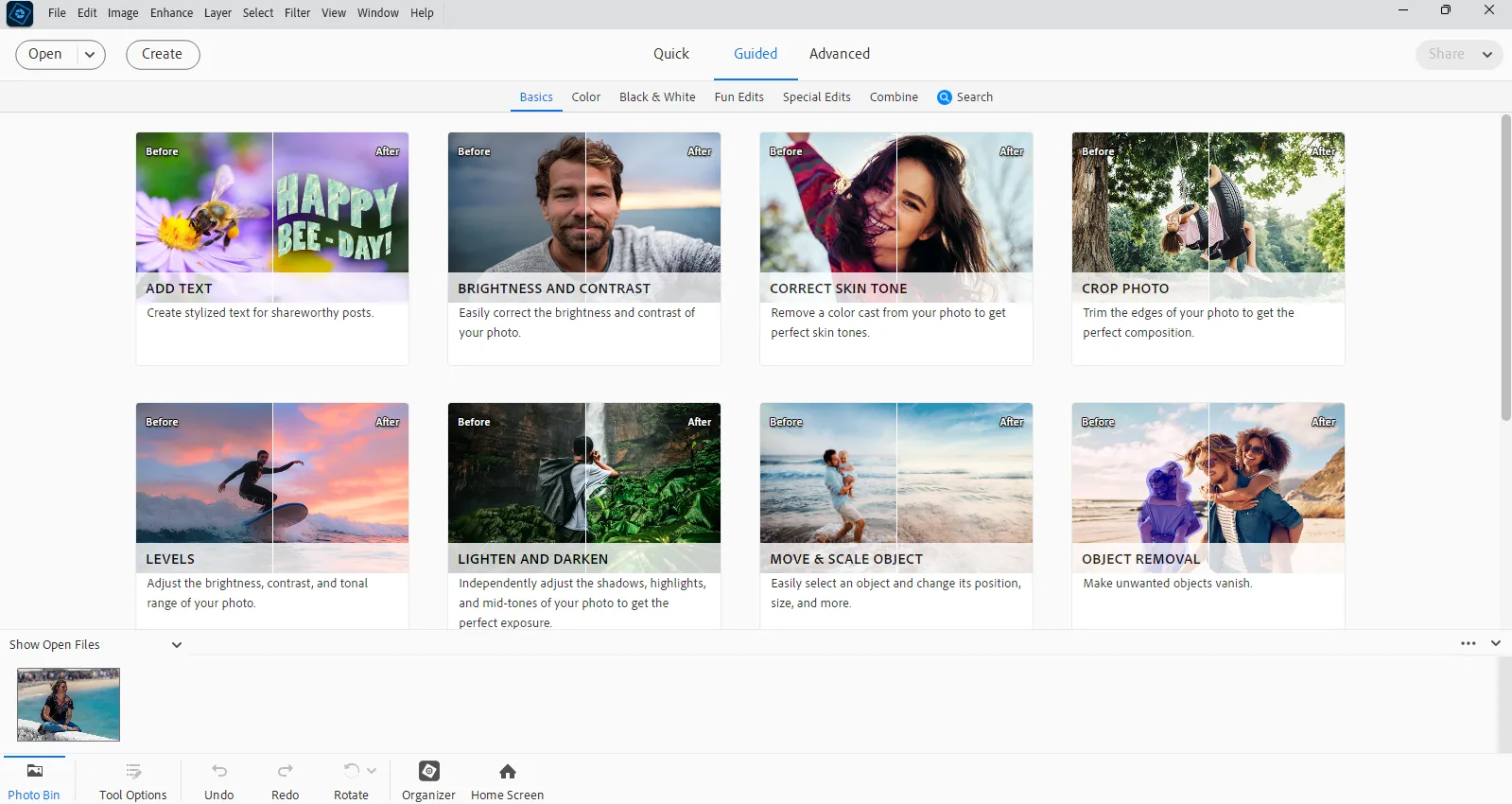
It would be great if the chosen solution already included modern tools for automating the photo editing process, in particular using artificial intelligence technologies. Especially considering report at Adobe MAX 2025, Adobe reported that 86% of social media creatives are now created using AI.
Regardless of functionality and level of automation, price is the deciding factor when choosing a photo editing program for beginners. Beginners typically prefer free solutions or programs with a one-time payment. A one-time purchase removes the fear of ongoing monthly payments, which is typical with a subscription model.
Consumer photo editing software
Gone are the days when mastering professional software was a prerequisite for photo editing. Today, solutions with intuitive interfaces and simple tools allow you to edit photos, if not at a professional level, then certainly close.
Adobe Photoshop Elements
Adobe Photoshop Elements is a simplified version of the professional Adobe Photoshop, created specifically for home users, beginner photographers, and amateurs who need a powerful yet intuitive photo editing tool without a complex interface and unnecessary features.
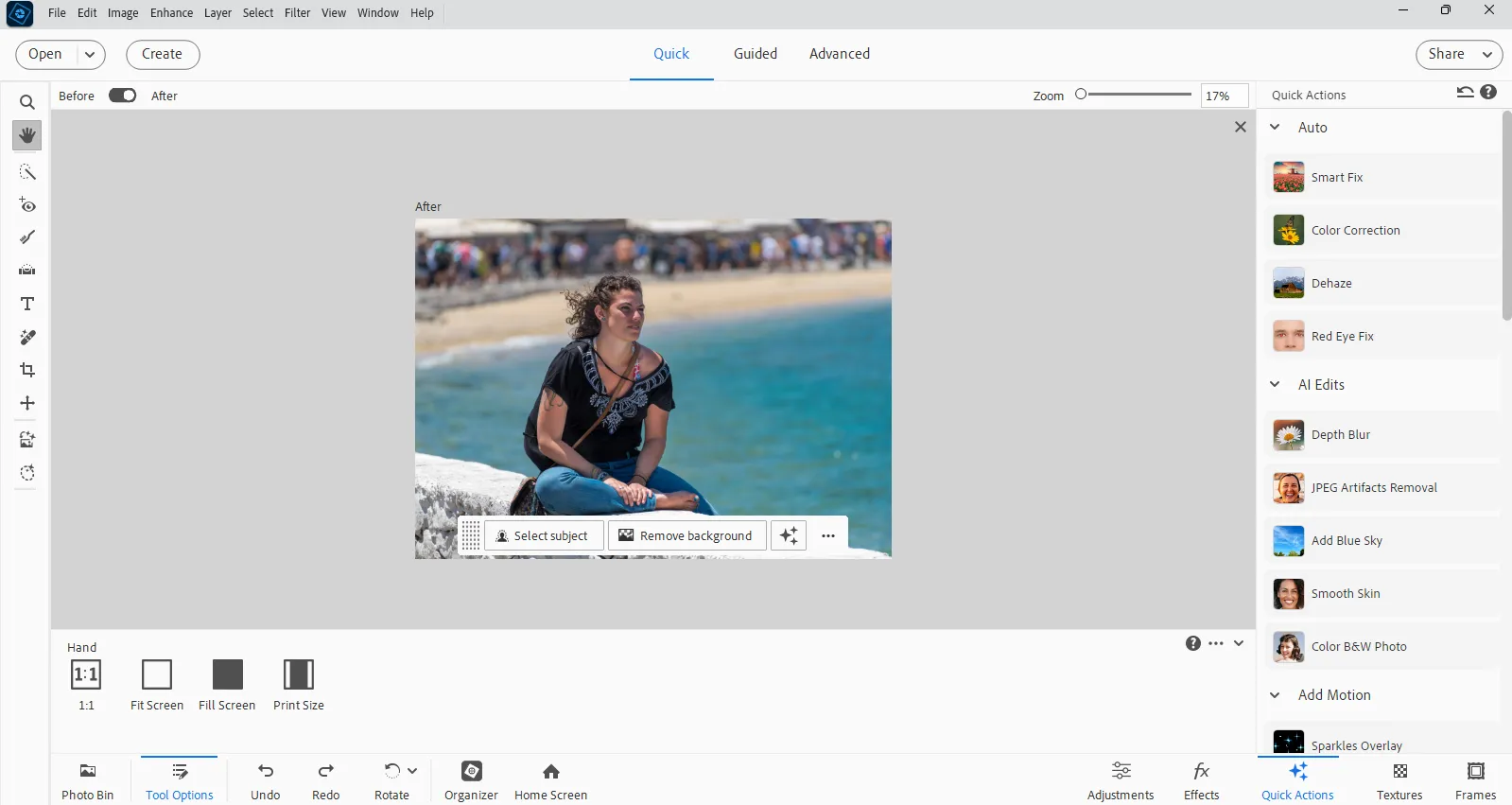
The program combines some of the technology of its "big brother" (Photoshop CC), but in a simpler and more intuitive form. Photoshop Elements is aimed not at professional retouchers or designers, but at everyday users who want to enhance, organize, and creatively design their photos without delving into graphic terminology.
Despite its simplified design, this software features all of Adobe's advanced generative photo editing technologies. Using features such as AI, object removal and addition, background replacement, and smart image correction, even a beginner can easily achieve professional-level editing.
It's worth noting the "Advanced Mode" separately, which makes the Photoshop Elements interface similar to the professional version, allowing beginners to get used to it and prepare for the future transition.
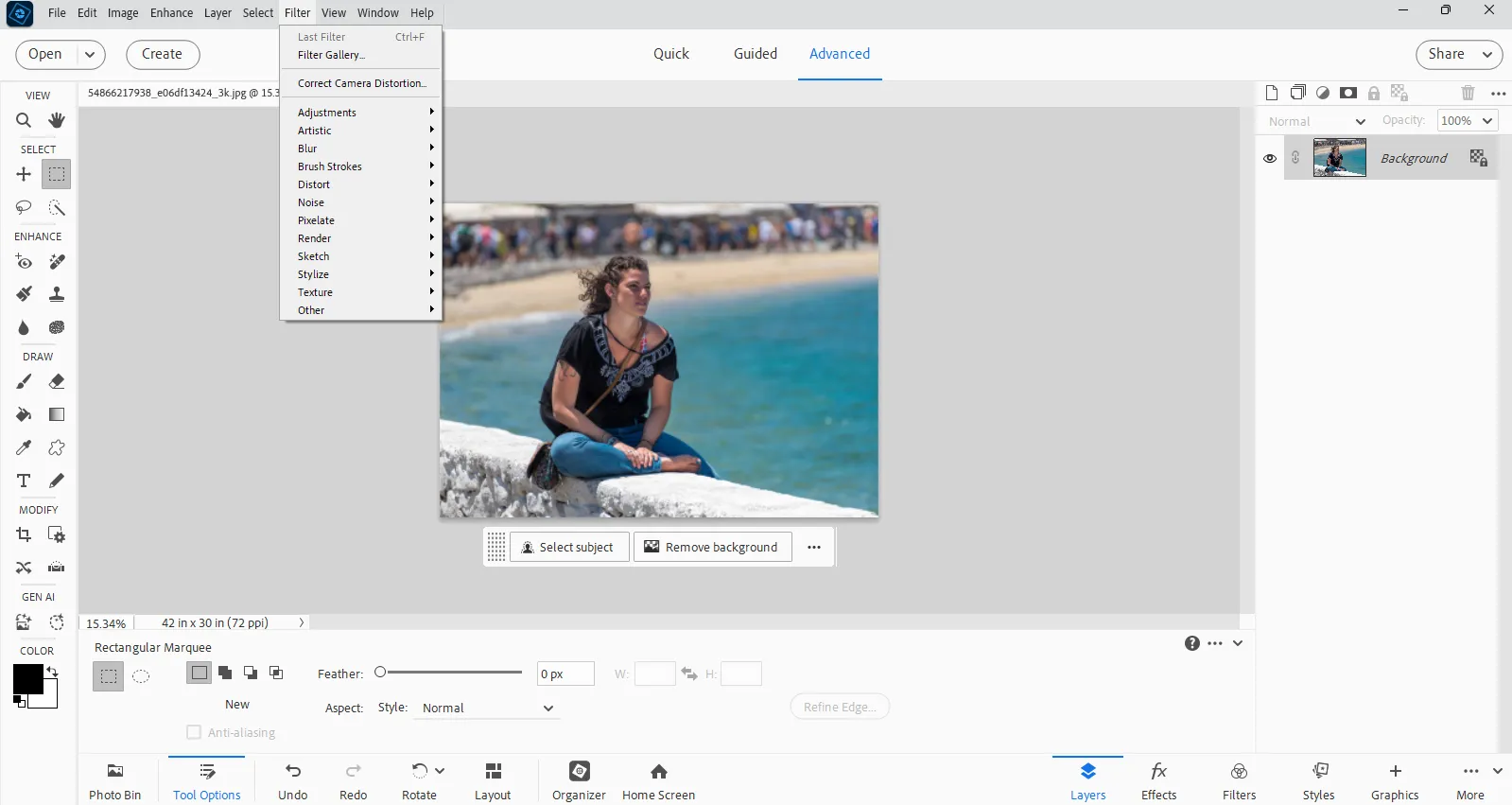
Like most Adobe products, this editor is a subscription service. Unlike the professional version, which requires a monthly fee, this one has a three-year subscription. The exact price varies by region, but even in the US, it's only $99, or $2.75 per month. It's a very affordable price for both home use and as a first step into professional photo editing.
Advantages:
- Simple, intuitive interface structure.
- Advanced AI-powered features including background replacement and object removal.
- Possibility of learning through gradual mastery of the “Advanced Mode”.
- Deep integration with the Adobe ecosystem and Adobe Cloud.
- A great balance between simplicity and powerful features.
Disadvantages:
- Requires installation through the Adobe ecosystem and account creation.
- Doesn't work on Linux.
- AI features are subscription-based.
Neo Light
Luminar Neo is the solution for those who want the highest quality results with minimal effort. Developed by Skylum, the program combines a simple user interface with powerful artificial intelligence technologies. The final results are so impressive that Luminar Neo is often used by professional photographers when they need to quickly perform basic editing.
Unlike Adobe Photoshop Elements, Luminar Neo was developed from the ground up as a tool for creative and automated editing. It offers users not only familiar editing functions (brightness, contrast, color correction), but also a whole suite of intelligent tools that automatically analyze the image and suggest optimal solutions.
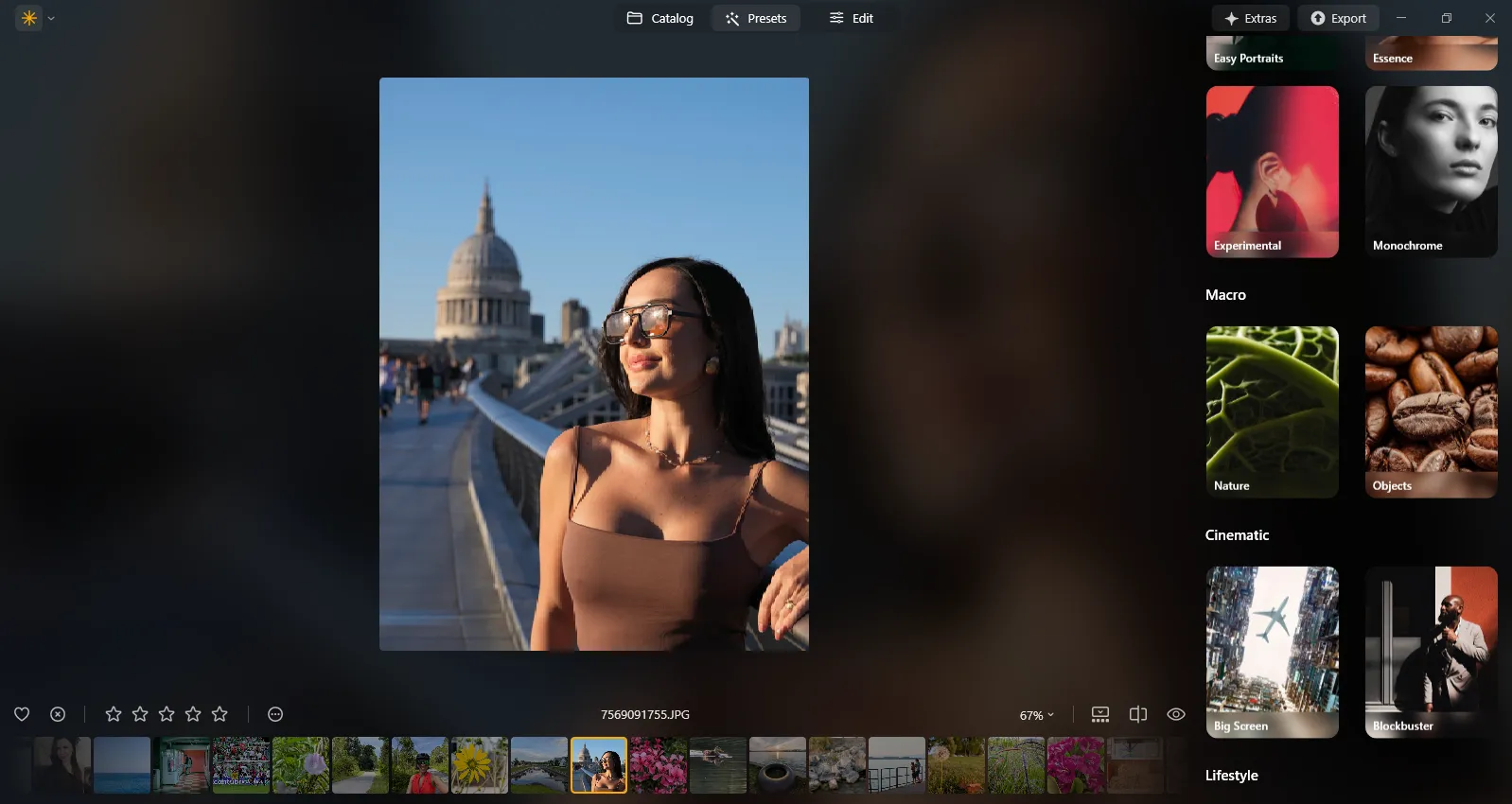
In addition to automatic tools, the program offers the ability to manually edit photos.
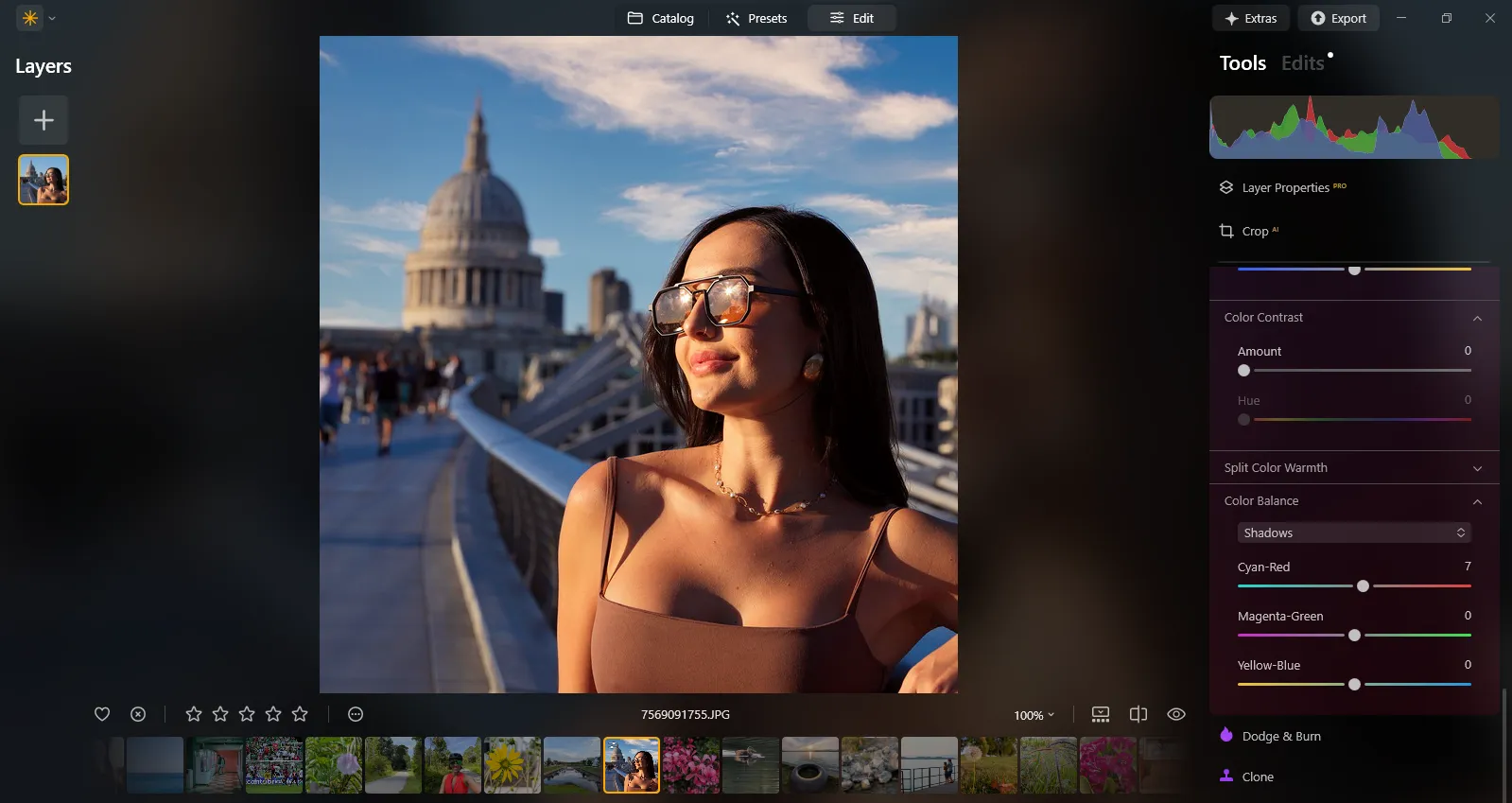
All AI tools run locally on the user's computer, which is beneficial in terms of convenience, privacy, and cost. Luminar Neo is distributed under a lifetime license. The specific price depends on whether or not you have access to the Creative Library and the mobile version of the program.
Advantages:
- Modern AI processing algorithms with high results.
- Lifetime license.
- Minimalistic interface, ideal for beginners.
- Works quickly and autonomously, without the need for a cloud connection.
- There are plugins for Lightroom and Photoshop, making Neo a versatile solution.
Disadvantages:
- Some tools and creative filters are only available with the purchase of additional packages.
- Higher system requirements compared to Photoshop Elements.
- Limited options for manual retouching.
Corel PaintShop Pro
Corel PaintShop Pro is a photo editing program that combines professional-grade features with ease of use for beginners. The interface is minimalist and intuitive. Most tools are grouped by task type: retouching, color, composition, and effects. Even without experience, users can quickly master basic operations.
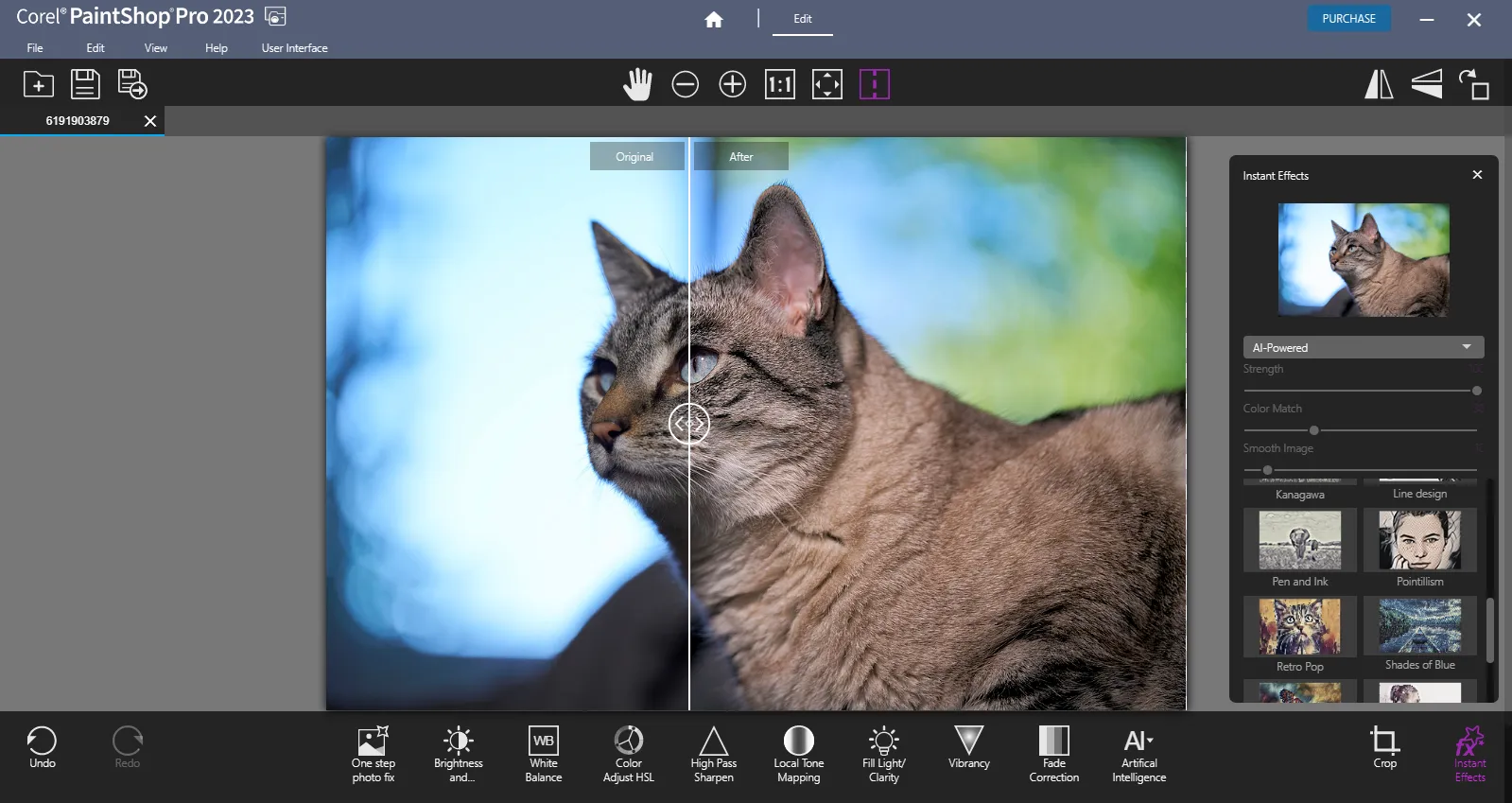
The app keeps pace with its competitors in terms of implementing AI-based technologies: automatic image enhancement, intelligent object removal, background replacement, and old photo restoration.
To make it easier for beginners to get started, the developers created an entire section dedicated to tutorials. However, during the preparation of this article, these resources were unavailable.
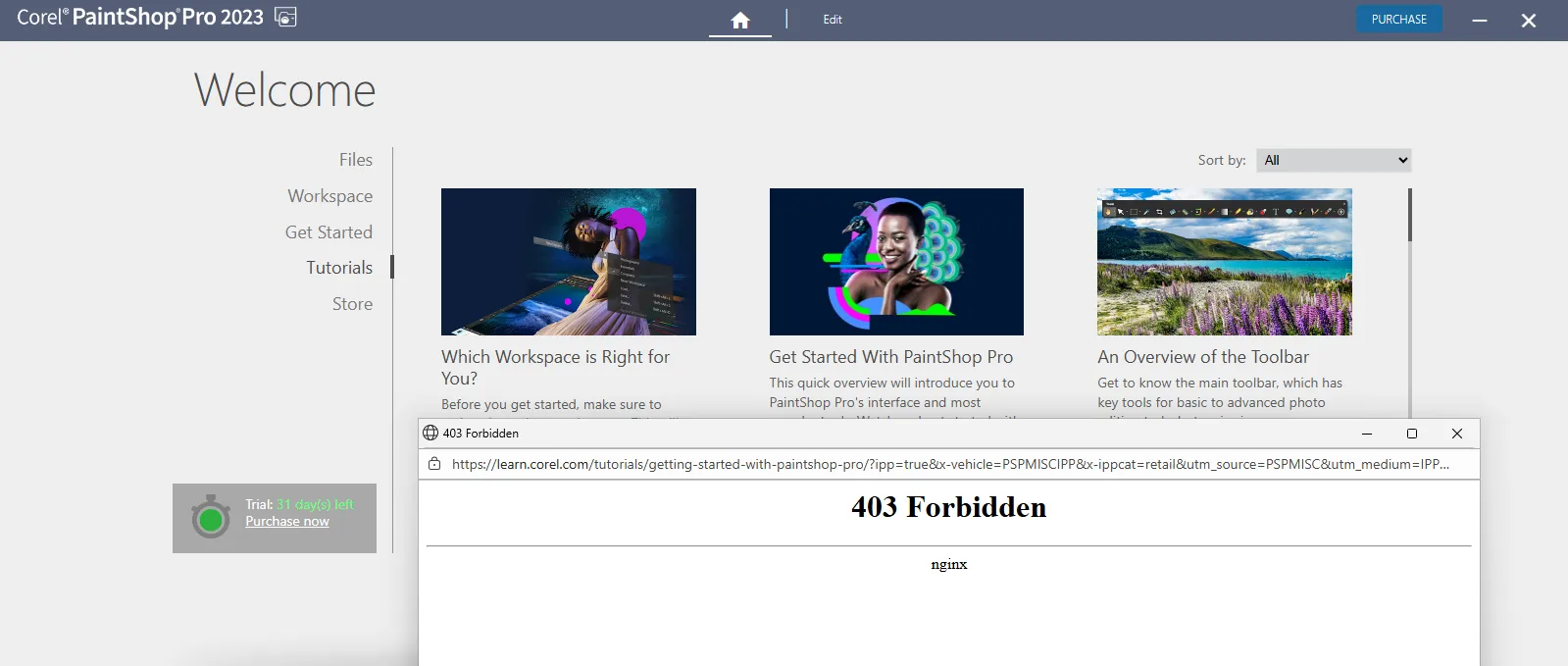
If the basic editing tools aren't enough, you can switch to "Advanced Mode," which unlocks all the program's features.

PaintShop Pro is ideal for photo editing beginners because it requires no subscription. A one-time purchase gives users unlimited access to all features.
Advantages:
- Buy it once and use it without restrictions.
- Strong balance between manual and automatic processing.
- Suitable for mastering more advanced retouching techniques.
- Stable operation even on average-power PCs.
Disadvantages:
- Only Windows is supported.
- The interface looks less modern than its competitors.
- Problems accessing training material.
- Fewer creative automation tools than Luminar Neo.
Web services and mobile applications
Modern technology has made photo editing accessible beyond the computer. More and more, budding photographers and content creators are using web services and mobile apps that allow them to edit photos on the go. The main advantage is that there's no need to install cumbersome software or purchase a powerful PC.
Web services: editing without installation
Online editors like Pixlr, Befunky, and Fotor work directly in the browser and largely replicate the functionality of desktop apps. Photopea, for example, supports layers and PSD formats, making it an excellent alternative to Photoshop.
Pixlr and Fotor's main strengths are their simple interfaces and automatic filters. Users can quickly correct exposure, remove defects, or apply ready-made presets without the hassle of professional color correction. They often perform so well that the results are indistinguishable from the work of a professional.
For example, the Vibrant Colors DLX tool in the BeFunky editor is specifically designed to increase the intensity of only muted colors, leaving already saturated colors unchanged. This makes the image more beautiful and appealing while maintaining a realistic look.

Web services are device and operating system-independent. Simply open the website in your browser, upload your photos, and start processing. However, these solutions require a stable internet connection, and their free functionality is limited.
Mobile apps: editing on the go
For many users, smartphones have long been their primary camera, so it's logical that photo editing has also migrated there. Apps like Snapseed, Adobe Lightroom Mobile, or Polarr allow you to edit photos immediately after shooting and share the results on social media in minutes.
Mobile editors often combine an intuitive interface with advanced features: intelligent correction, RAW file handling, and filters, such as those that simulate film. Some, like Google's Snapseed, are completely free and offer basic tools comparable to desktop solutions, while Lightroom Mobile allows you to sync photos with the Adobe cloud.
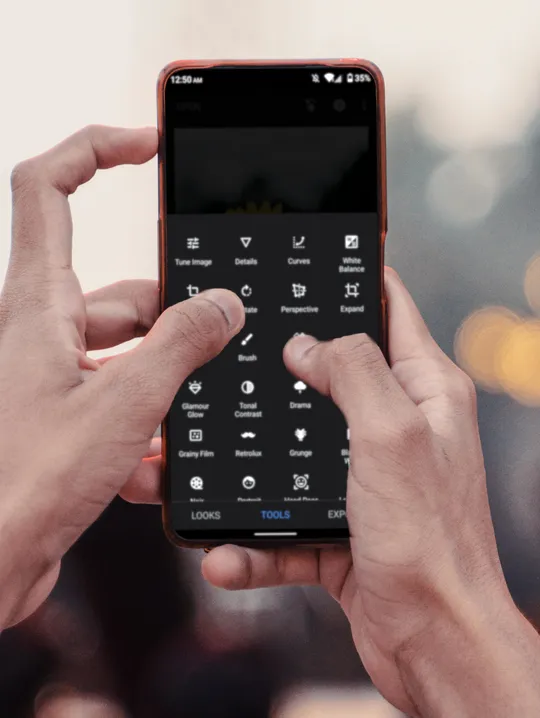
Mobile apps are ideal for mastering the basics of editing: they develop a sense of composition, understanding of light and color, without overloading the interface with unnecessary elements.
Keep in mind that while web services and mobile apps offer powerful tools, they still have many limitations compared to professional programs. In most cases, they don't support RAW formats. They often work with JPGs, don't preserve metadata, and use non-standardized industry units of measurement. For example, Canva uses points for font size, while Photoshop or GIMP uses pixels.
Conclusion
Photo editing isn't about complicated software, but about understanding how to improve an image step by step. It's important for beginners not to look for the "perfect" program, but to find one that alleviates the fear of the first steps and helps them grow gradually.
Remember: the key to choosing a program is matching your needs to the program's capabilities. If you're learning to work with light and color, a simple app with automatic corrections will do. If you want to master retouching and composition, choose solutions with "advanced modes" and tutorials. Once you gain experience, the transition to a professional level will come naturally.
Mistakes and experimentation are part of the creative journey. Don't be afraid to try different tools, compare, and find your own style. Then the program will become more than just a utility, but a reliable assistant in your growth, from your first edits to confidently working on professional projects.